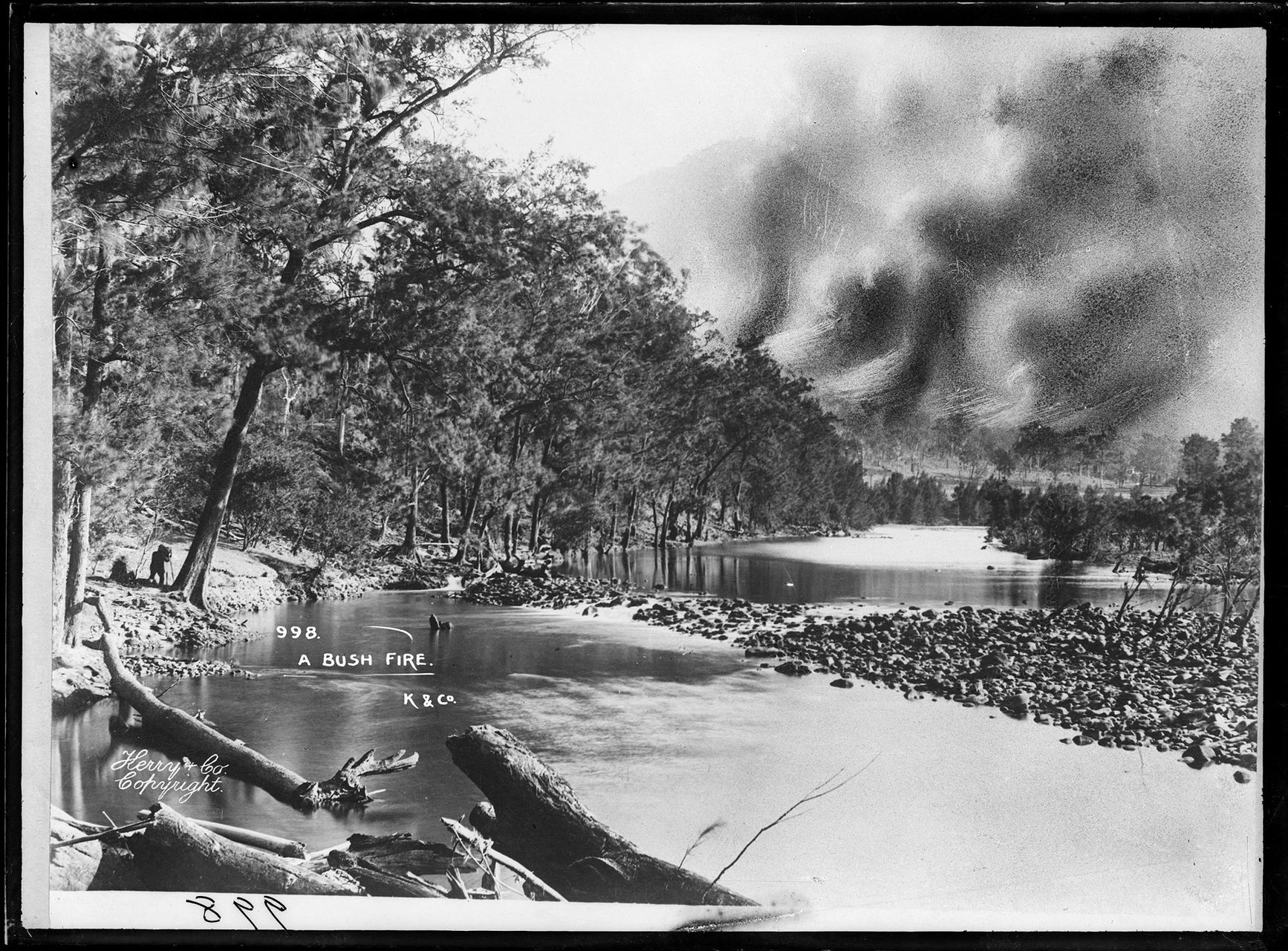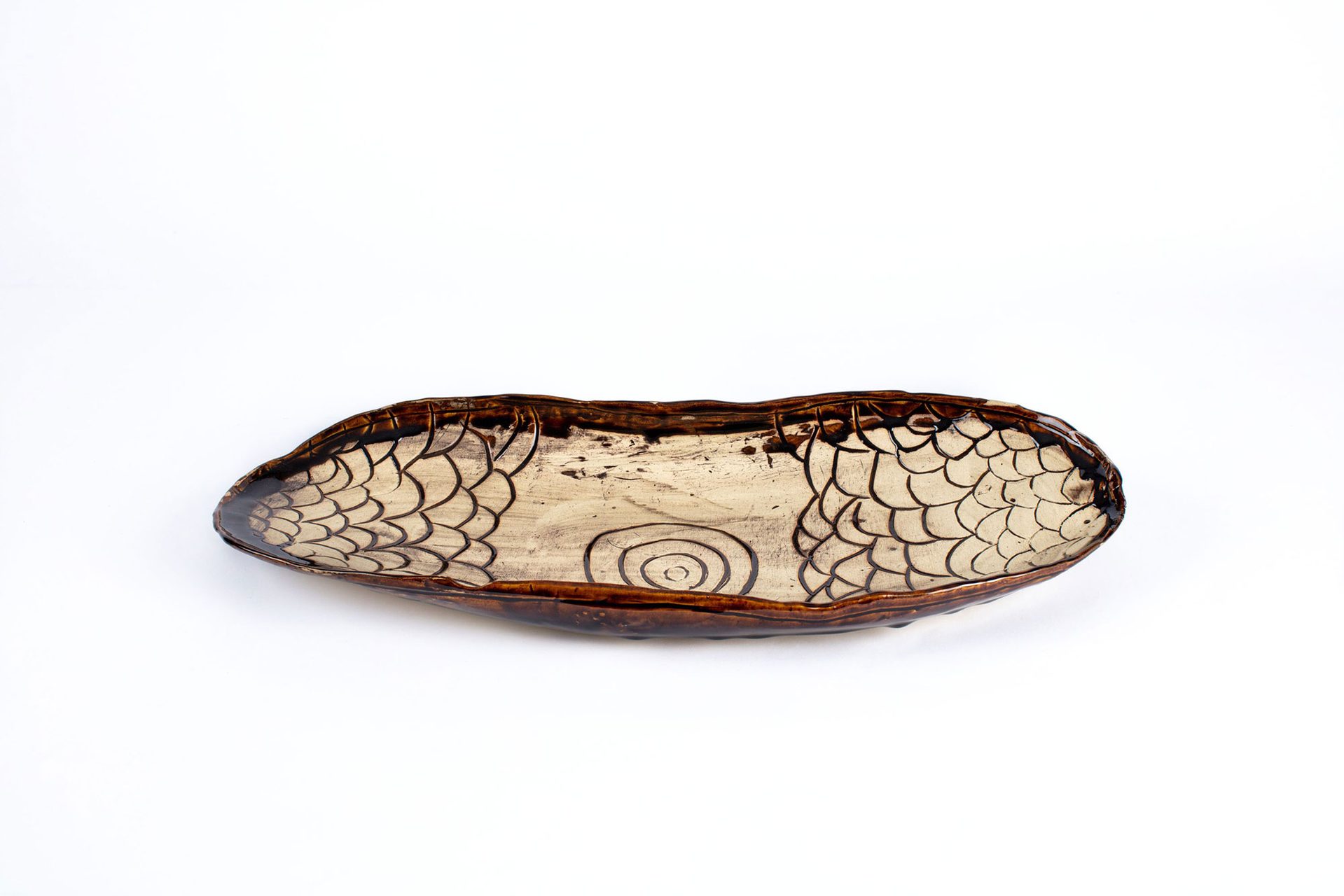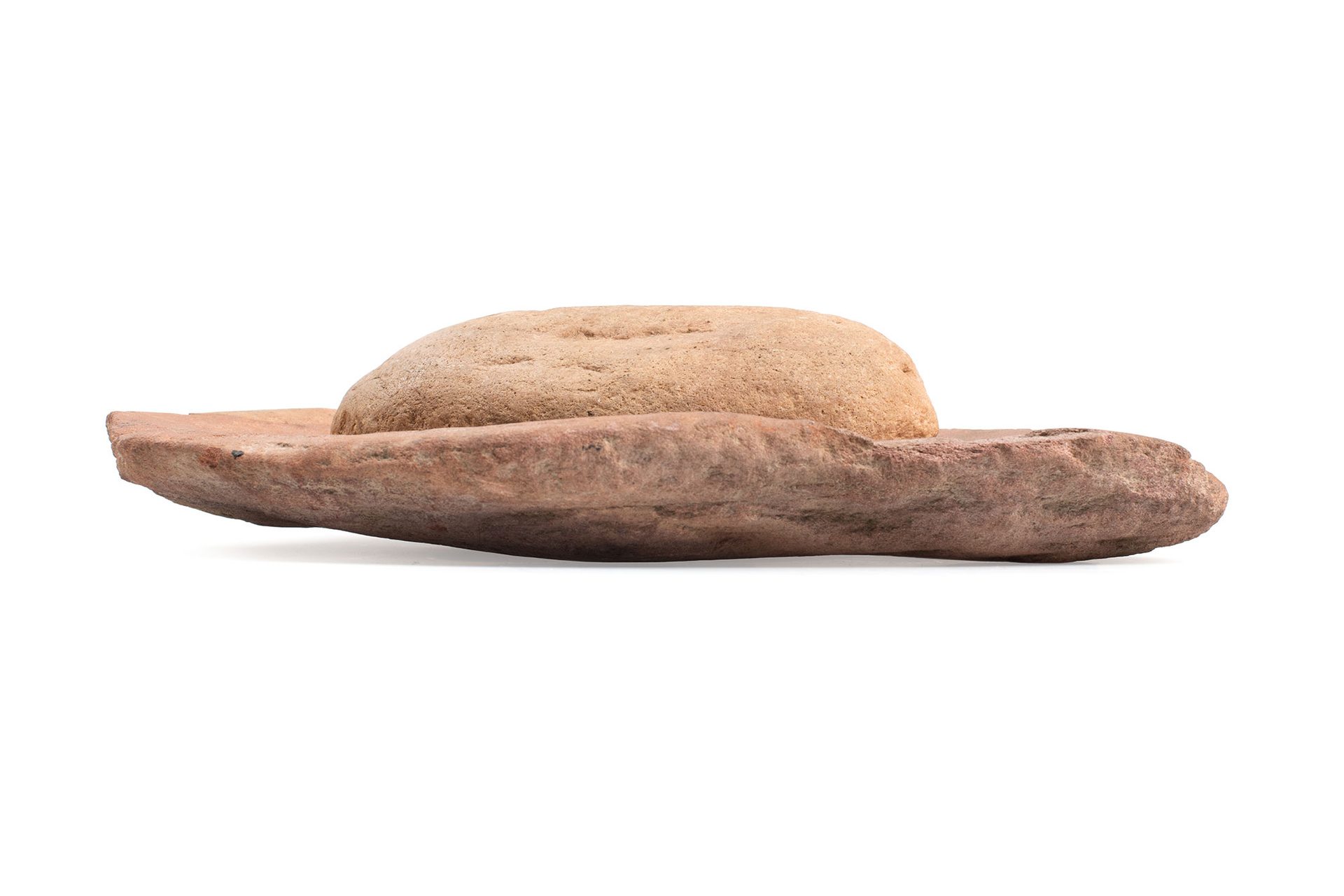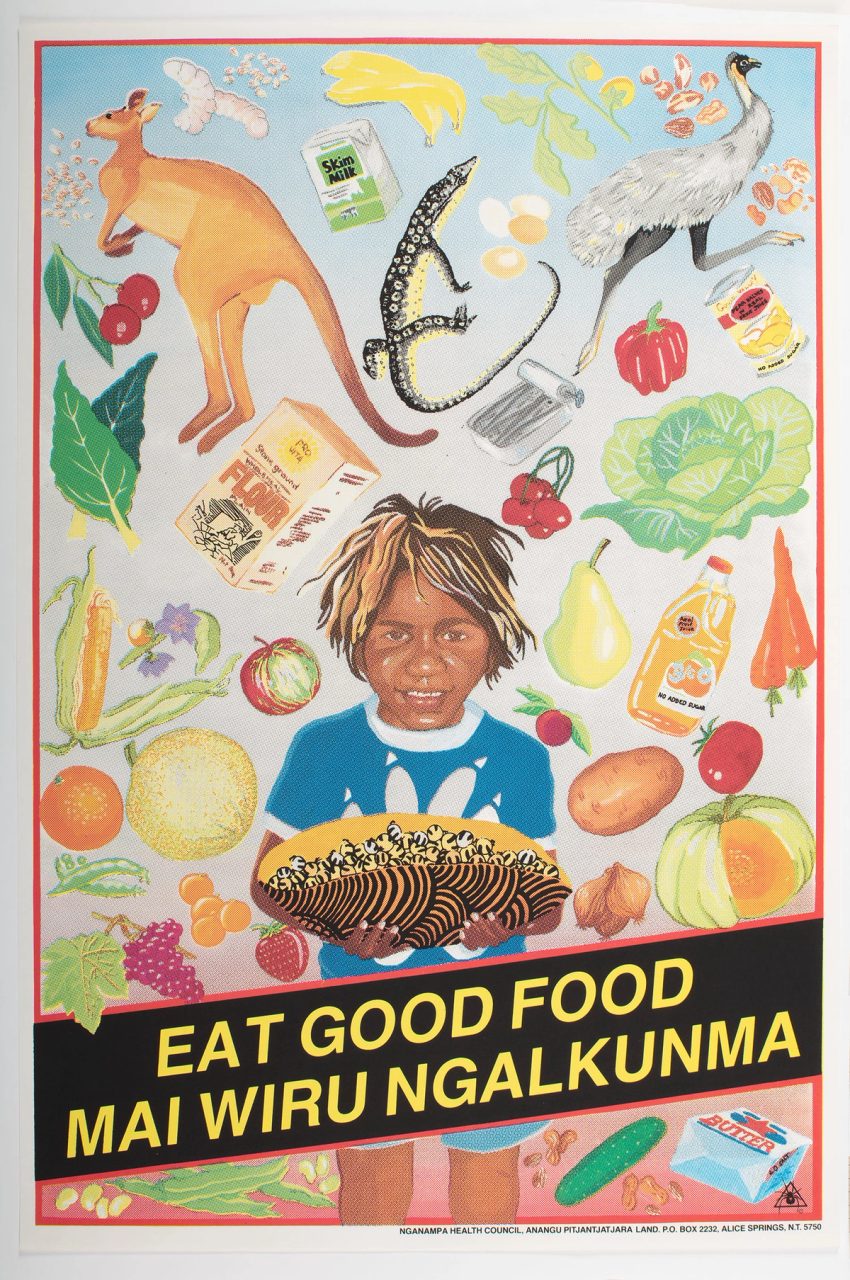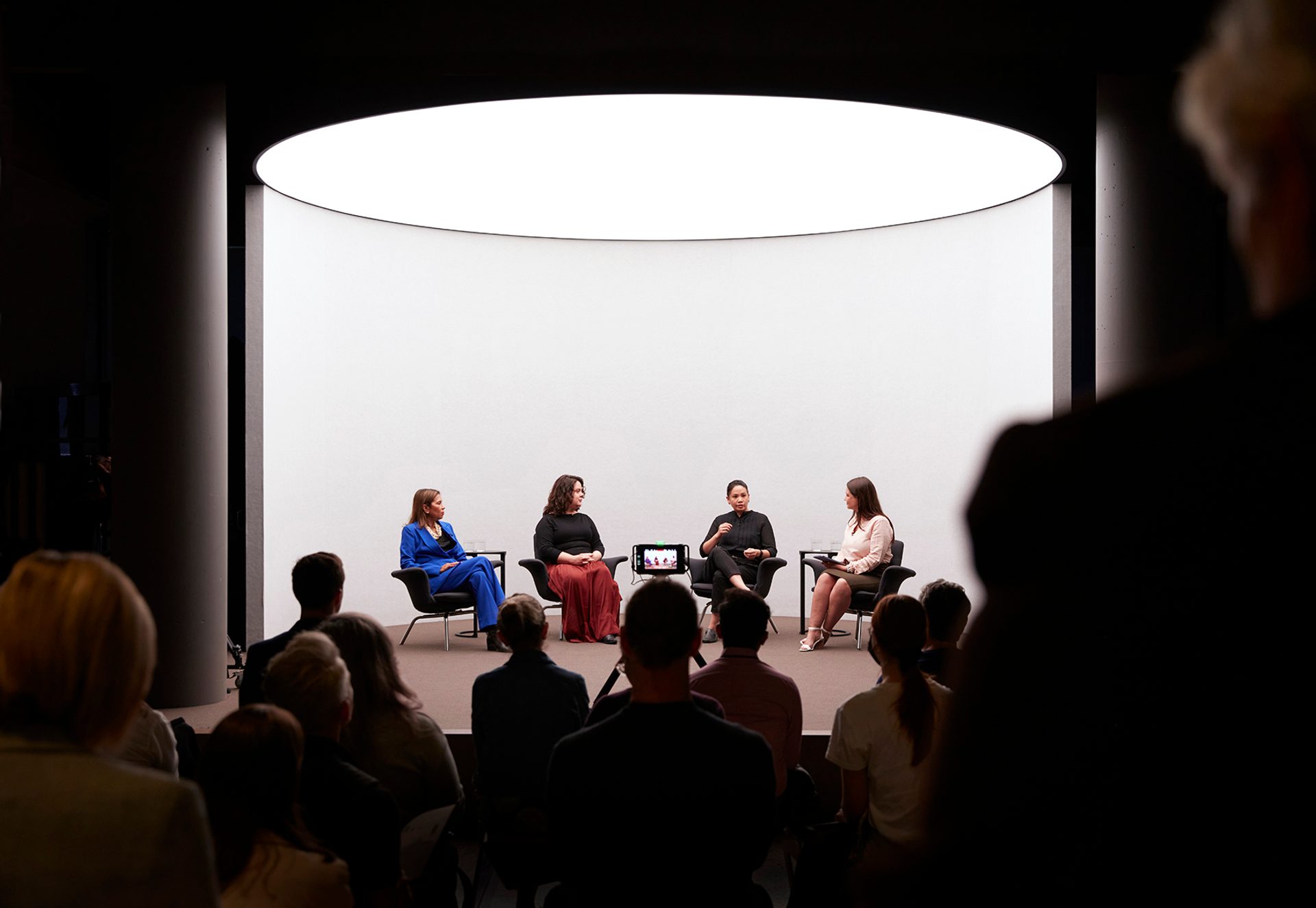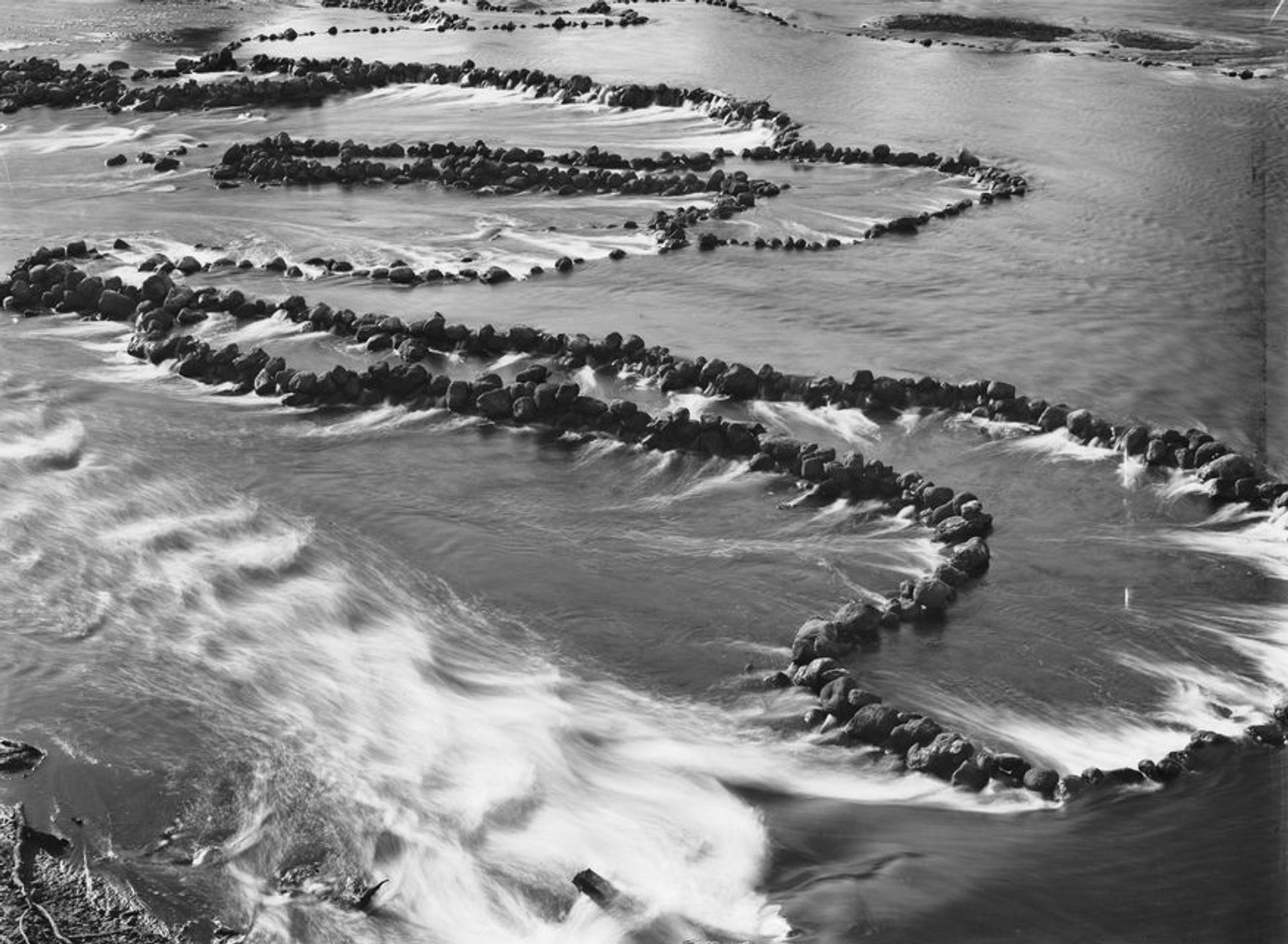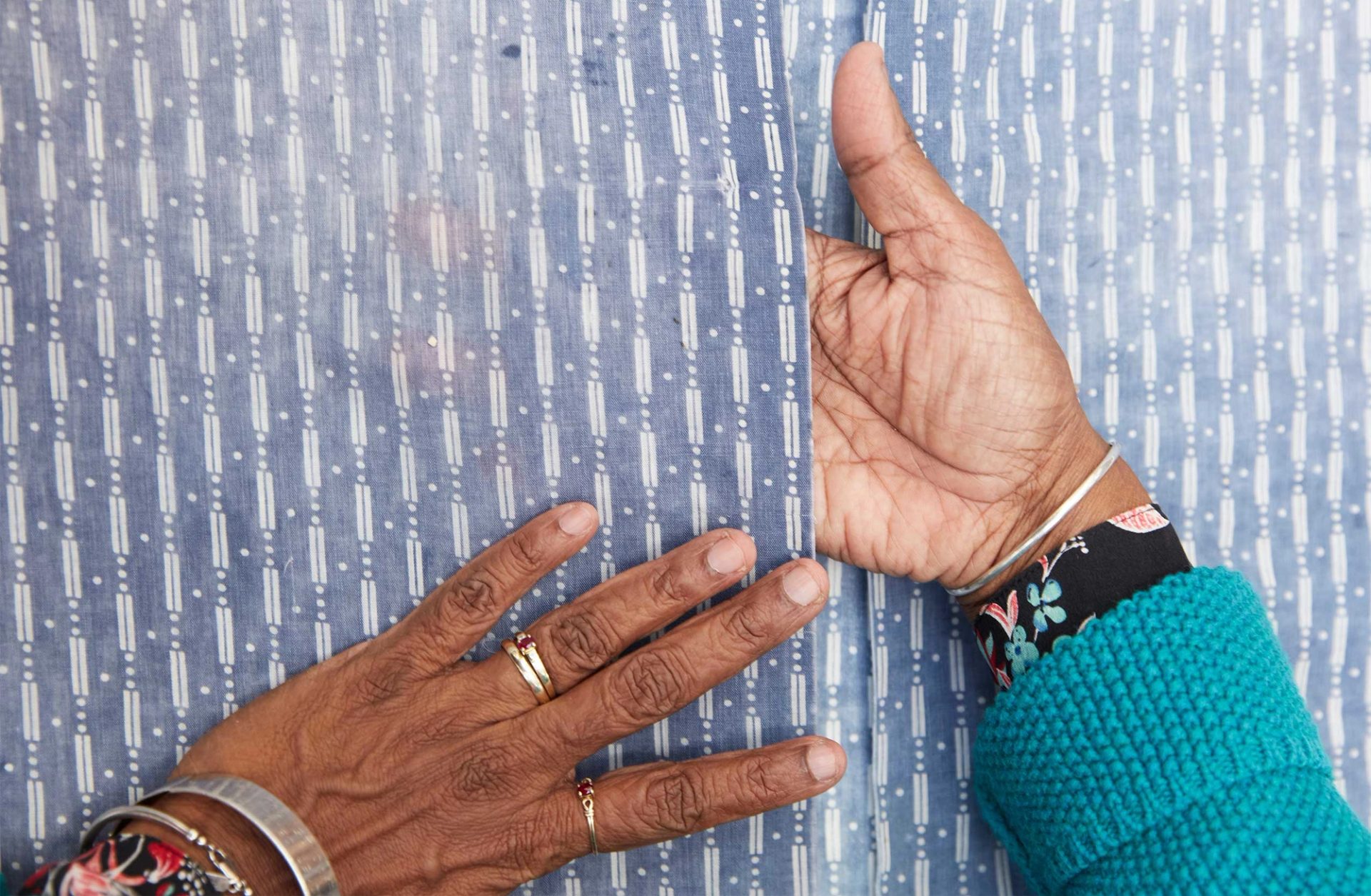Nourishing Country

‘You can’t eat our food if you can’t swallow the history. So you can get excited by this food and it can be very trendy, but how are Aboriginal people going to benefit from this?’
Bruce Pascoe looks to how traditional knowledge and cultivation of Indigenous crops might foster a revitalised relationship to land and agriculture. One of Australia’s most influential thinkers, Pascoe shares his experiences of the 2019 Mallacoota bushfire and how he has been nourished by the revival of his East Gippsland farm and traditional knowledge and practice.
Craig Reucassel Thank you for being part of 100 Climate Conversations. This is number 16 of the 100 conversations happening every Friday. The series presents 100 visionary Australians that are taking positive action to respond to the most critical issue of our time, climate change. We are broadcasting today in the Boiler Hall of the Powerhouse museum. This actually used to be the Ultimo Power Station. In the context of this architectural artefact, we shift our focus towards the innovations of the net zero revolution.
We’re of course coming to you from the land of the Gadigal people of the Eora Nation and the Powerhouse acknowledges the Traditional Custodians and ancestral homelands across all of their museums. We pay respect to Elders past, present and future. I’m Craig Reucassel. I’ll be your host today. We’ve – [this] lovely person is Bruce Pascoe, who we’ll be getting to in a second. We’re very lucky to have him here to talk to us. Bruce Pascoe is a Yuin, Bunurong and Tasmanian man who’s a renowned author and farmer who’s devoted to research and implementation of First Nations agricultural practices and the regeneration of Country. Pascoe has won numerous awards, including the Australian Council Award for Lifetime Achievement in Literature in 2018. We’re thrilled to have him with us today. Welcome, Bruce. Thanks for joining us here.
Now you’re living and working on your farm in Mallacoota on Yuin country, and we’re going to talk a lot about that farm, but I wanted to start – just because whenever I hear Mallacoota it just immediately takes me back to those photos in 2019 from those fires – and I want to ask first, how is Mallacoota recovering? How is the area recovering?
Bruce Pascoe There have been a few houses built, two years later. But a lot of the people in Mallacoota were renters and so those people got nothing, lost everything and got nothing. And it’s a real indictment of capitalism that the only people who got real assistance were landowners. And that’s a conversation this country and the world will have to have.
CR And has it changed? Does that mean a lot of people have left Mallacoota that used to live there? Has it changed the town?
BP A few have left. Most have stayed. It’s a pretty seductive town to live in socially and environmentally. But the town has changed, the mood isn’t the same as it was. There’s a lot of, there’s a lot of pain still in the town and it surfaces in strange ways. So, we will recover, we’re a very strong town, we’ve got the support of Country. We’re surrounded by beaches and forests and it’s a beautiful place to live. You will recover there, but it does take a lot of time.
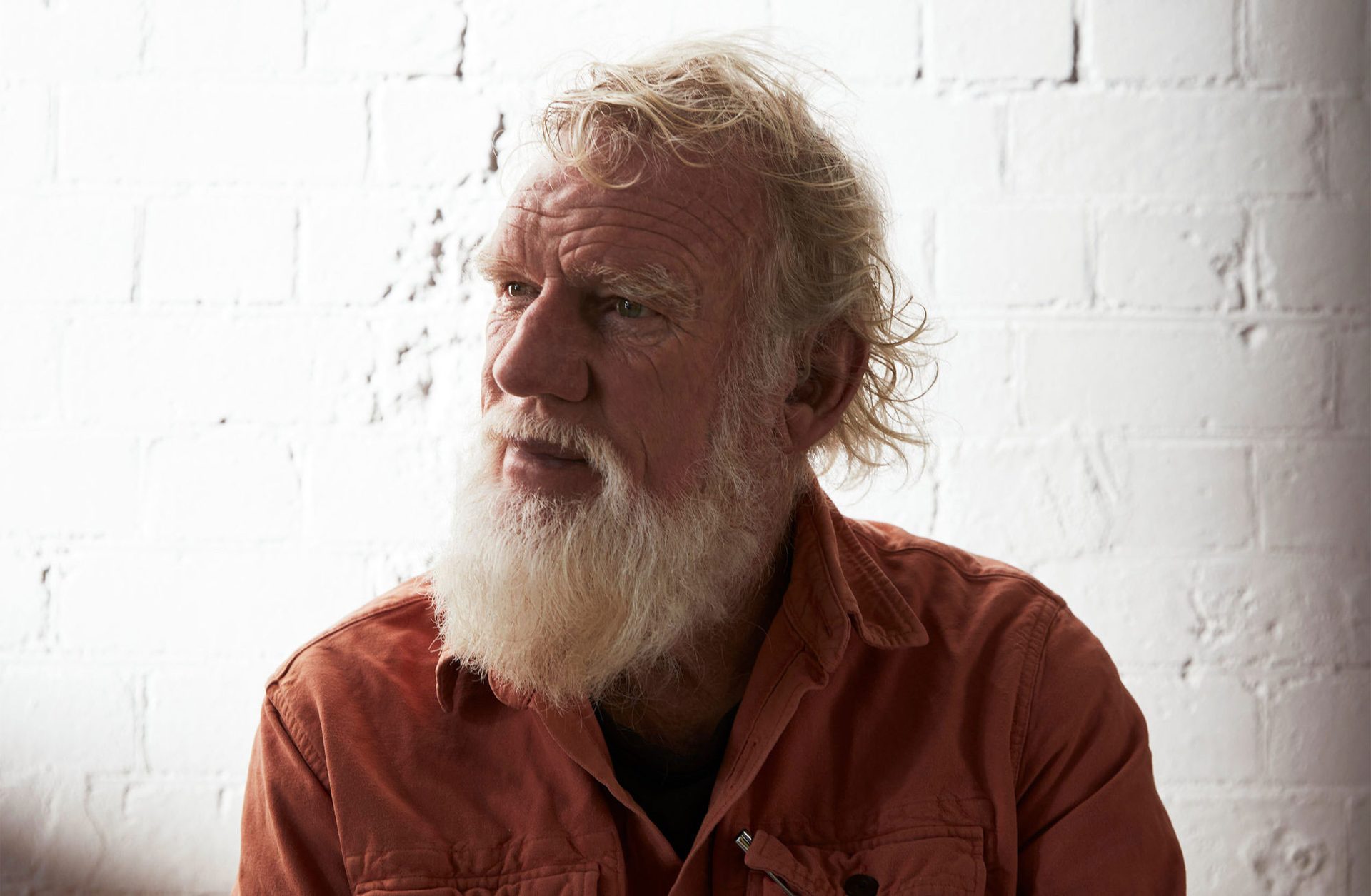
CR Now, you have been a member of the Country Fire Authority [CFA] for many years. So, when the fires hit Mallacoota, this wasn’t something new for you to be battling the fires. Was it very different, though, that year?
BP It was incredibly different because we’ve never seen a fire like that. Mallacoota was hit by a bomb. It was a huge column of gas and cinder that descended on the town and it was fire, the fire just fell out of the sky. And if it hit you, it hit you, you were gone. We didn’t lose a life in the town of Mallacoota. I lost a good mate of mine up at Genoa but he died of a heart attack from fighting the fires. But Mallacoota was really lucky, in a way you could say the whole thing’s bad luck, but it could have been a lot worse, you know, 140 odd houses is bad but the whole town could have gone, just to a bit of a wind shift. And we’re very, very lucky to have got away with it. But we knew it was coming.
Before the fire, when we knew it was on its way, I counted a forestry coupe just on the New South Wales border and I was counting 330-40 trees to the acre and the trees, 300 mil diameter cheek by jowl, and they are too close together. This is a woodchip plantation for an industry we shouldn’t have, we can’t afford it. We’re giving the timber away and we’re making the forest really dangerous. When I did that, I thought – I took my daughter and grandkids, we were all swimming in the river, having a lovely time and I could just see the sky and I was feeling sick. My granddaughter was singing and I thought, I can’t bear this, the prospect of danger was too great. I said, ‘Marnie, come on, get in the car, we’re going.’ ‘No, Dad. We’re having a swim’. I said, ‘No, we’re going.’ So, I took them to Eden and as I was passing some of those forestry coupes that I’d counted, I thought, I’ll bet you I don’t see you tomorrow.
CR Yeah.
BP And so the family went off to Canberra and I came back through the fires, most stupid thing I’ve ever done. I’ve usually been pretty careful with my life, but that was, everything I’d been trained to do, I didn’t do. I had my two dogs in the back of the car and I came past that coupe, winding around on the highway and trees down everywhere, road on fire. And I came to one of those coupes and it was gone, there was ash that high on the ground, and it was snow white. It was a surreal landscape.
CR So those kind of commercial coupes, that forestry there, you say we shouldn’t be doing that kind of thing. What should we be doing? Has this led to a kind of reassessment of how we actually manage our land?
BP Well, I don’t think it has made us look at that. We’ve been arguing for it for a decade or so that that kind of forestry is very dangerous and also not very profitable. But it made me investigate the old Aboriginal forest, what was there prior to contact. Bill Gammage is a mate of mine and we talk about that forest and he’s written that beautiful book, The Biggest Estate on Earth, which talks about how Aboriginal people had planned the continent and planned its growth, planned its production, incredible achievement. And we can’t talk about using those skills and using that technique without acknowledging the old genius of those old people, how they planned their world.
CR How did they plan it? So, what would it have looked like more traditionally?
BP I’ve been trying to give Mallacoota Shire or the Far East Gippsland Shire a map of Mallacoota from 1847. The first survey. And every hill, every lake, every river is in Aboriginal language. So, McCabe, the surveyor, was accompanied by an Aboriginal person who was probably a woman called Mallacoota Kitty, so he was given all that language. But he also describes the country and where Aboriginal people were growing food is where people in Mallacoota are growing food now.
The farmlands are basically the old Aboriginal croplands and it was open, much more open than it is now. And the forests were full of big trees, around ten to the acre, and food grew beneath the trees. And it’s a much more complicated harvest as a result because you’re within a forest and you might have seven or eight different tubers, you might have six or seven different grains, and they all require different treatment. And today’s farmers are going to look at that and be aghast. When we harvest, we just do one thing. When we plow, we just do one thing. But this is complicated and it requires people and what capitalism hates is people, they don’t like paying people.
CR Expensive aren’t they, they’re terribly expensive.
BP And a nuisance, they want stuff. But our world has to look at using people back on the land and providing food for themselves. Not some giant like Kellogg’s.
‘Our world has to look at using people back on the land and providing food for themselves. Not some giant like Kellogg’s.’
CR I want to come back to that particular farming approach in a minute. But just before we leave the fire, particularly there’s discussion about Indigenous land management, fire management, and that also takes a lot more people to do it. Can you talk us through the theory of that and how it works?
BP I’d also like to mention that the East Gippsland Shire refused to take possession of that map for reasons I can’t understand. And it’s a real shame because it’s proof of Aboriginal occupation of the land and proof of land management. It’s a great tool. But let’s get on to the good news, which is the old Aboriginal fire regime is really slow and I was taught it by an old man from Mallacoota and I taught it to my son and we’re both in the CFA and it is such a beautiful thing to do. When we dress up to go to a fire, we dress up as if we’re going to war, we’ve got a helmet, we’ve got a visor, we’ve got gloves, big coats, big trousers, big boots. And really the old Aboriginal fire was done by people with bare feet. And if that – if you can’t walk through that fire, it’s too hot.
And this is why we damage Australia, because we think we’ve got to do it quick, it’s got to be done today. And so we have canopy fires where there’s destruction everywhere, animals get killed and it’s unnecessary. But once again, in order to do the kind of fire that we’re doing on the farm and around the district now, you need people on the ground. So, we the other day burnt maybe ten acres and we had seven people. Now the CFA couldn’t tolerate that, far too many people, far too little ground burnt. But we can literally walk through that fire. I had my grandkids with me and these little kids are walking backwards and forwards through the fire because it just creeps along and it leaves little oases. So, animals are allowed to hide in that oasis and it’s a peaceful day.
CR The Aboriginal approach, the kind of cool burning approach, is a small fire that just creeps along the ground. And what’s the intent, what’s the difference there? What do you achieve by just doing this kind of smaller fire?
BP You don’t want to bake the soil, for a start, because if you get an intense fire, you cook that really rich part of the topsoil. And in Australia, often it’s only that deep anyway. And so it’s a dangerous thing to do economically, you’re killing soil. And so how do you recover the soil? Chemicals. It compounds, it becomes – capitalism is happy to spend money on chemicals, but not on people. And we just need to reverse our thinking because we can build soil by this slow fire and you don’t do it one day, you do it as many days as you can at the right time in the season. And it’s intolerable to a capitalist system to have people engage in that kind of activity but the old Aboriginal life must have had this as a routine. Everyone thinks that all Aboriginal life happens in the Northern Territory which discounts a lot of what happens down south. But we have got film today of people just chucking matches into the spinifex as a matter of course, to keep the country safe, not to make it dangerous. To keep it safe.
CR This has a couple of positive effects. I mean, let’s firstly talk about the animals, how do they respond to this kind of cool burning and how does it contrast to when you just light up the whole forest?
BP A lot of animals are cooked in those fires that the CFA and DELWP light today because they’re started with incendiaries. It’s like Dresden, let’s bomb it, get it over and done with quickly. We had a fire about two months ago and it was a lovely day and the fire went beautifully and you always see good things in the bush when you’re looking at the ground. And we were wondering what was happening and we came across a whole lot of praying mantis and they were literally walking away from the fire. And they’re a prehistoric creature and just walking away from the fire, we were just laughing at the irony of a praying mantis escaping from the fire, it was glacious.
CR That’s just how slow it is. As you say that takes time, it takes energy. I mean, it protects the canopy by just burning slowly on the ground. But what effect does it have on, for instance, the grasses on the – is there a positive effect on those actual grasses as well?
BP We’re trying to return our farm to perennial plants. The old people had perennial tubers, they had perennial grains, they had perennial fruit trees. Everyone can imagine a perennial fruit tree but the grains and tubers were not planted every year, they were just encouraged and they’re encouraged from fire. Our best kangaroo grass this year was where we burnt last year and it’ll happen again this spring, our best grass will be where we’ve burnt. We don’t want to burn there every year, but we know that we have to, for kangaroo grass, we have to do it every two years, that’s about nutrient replacement. You get two or three stalks above the ground, but the root mass is like that. So, it’s got a huge generator of life and growth, so a light scorch across the top of the ground, a bit of carbon replacement, bang up it goes.
It’s a wonderful way to farm and a lot of Australian farmers get a bad rap from Barnaby Joyce because they’re much more intelligent than that and a lot of farmers want to return to this, they can see the common sense. Most farmers love the ground, not all acknowledge the Aboriginal pre-history, unfortunately, but most people who live in the country actually like being in the country. To think that Australians might really love their country and because of that love, might want to care for it. And because of our desperate need to save the Earth, might look for gentle ways to do it. I think it’s a possibility, I hope it’s not a dream. We can’t afford dreams.
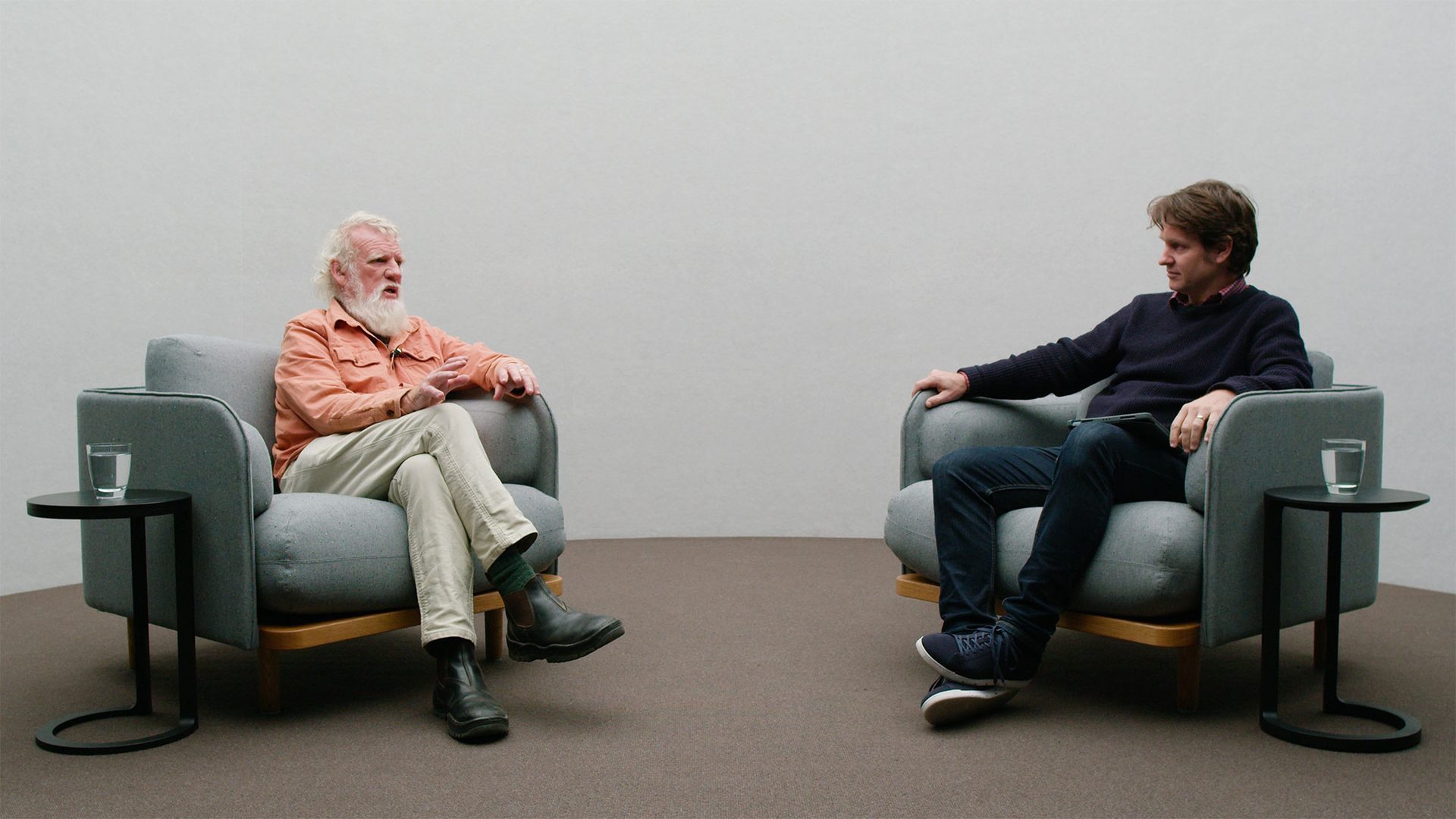
CR There’s so much knowledge involved in this and after the fires, you were awarded from WWF, money for an Indigenous Traditional Agricultural Knowledge Hub. What is that working on? Is that working on communicating this kind of knowledge?
BP It’s two ways, we do it culturally, when we light those fires, we’ve got people who are going through Aboriginal Yuin law. So, when we light that fire, it’s lit with a hand drill and with a ceremony, the appropriate ceremony, so that’s the way we light it. When we’re cropping, when we start up the machine and get ready to crop, we do a ceremony for that as well. So, we embed the culture in the practice. But yesterday we were working on kangaroo grass and it has an awn on it which you have to get rid of, and we haven’t really got the hang of how the old people did that but we’ve got a machine that is doing it now. So yesterday one of the young fellows spent all day trekking around with this machinery to perfect this treatment of this extraordinary grain and three Aboriginal people in the shed mucking around with machines that will probably be in this museum one day.
CR It’s fascinating when you say we don’t know how it used to be done because this is why you’re so amazing for this particular role, is that you’re a historian, you’ve got this incredible knowledge of history, but you’re sometimes chasing something that wasn’t necessarily recorded. How are you finding this ancient method? How do you get to the bottom of how this used to be done and the purpose of it?
BP Well, we’ve got a number of people on the farm who love their culture but also love reading and so we’re reading all those old diaries. And every now and then you find a description of a group of men and women burning a pile of grass that has been deliberately stacked. Why were they burning it? How were they burning it? What was the month of the year and what was the result? And all of that is science. And we try and replicate that because this grain that we were struggling with yesterday, we harvested in January, and I think we probably should have been threshing it in February, not May.
So, this is a process that we’re going through. And that amount of money that we got allows us to do this science in the shed with three dogs and cups of tea, it’s real science. And look it’s a joy to be involved with it but we are always speculating on what would the old people do now? They didn’t have this machine, what was the alternative? And finding the alternative will make the machine more efficient because it takes us a lot of time to treat the old grain. We think that the old people were steaming, making piles of the grain and steaming it to get seed drop. And we muck around with that.
CR So it’s kind of historical exploration. But also, you’re doing this for a purpose at the moment. I mean, can you explain what are you trying to achieve on the farm at the moment and what’s the goal?
BP I didn’t want to do the farm. It’s hard work but after Dark Emu became interesting to Australians, I could see that there were chefs and bakers ringing me every day wanting this food and I became really alarmed. I thought, ‘Here we go again. This is the new colonisation.’ White people, having discovered Australia and taken the land, have now discovered our food and they’re going to take the food before Aboriginal people have had any benefit from it. So, I bought them the land and local Yuin people work on that land to grow this food. There’s an environmental concern. Well, I’m not interested in the history, making it look cute for restaurants and things like that, although it’s going to be very bloody cute.
I’m interested in making sure that we look after the ground, so perennial grains and things are really important. The burning regime is really important, not plowing is crucial. But employing Aboriginal people and making sure that when Justice Olney or his grandson sits in judgment of our people at a native title court will not say that ‘You can’t have this land because your culture has been washed away by the tide of history.’ They were his words. I never want anyone ever again in this country to say those words. I want our people to say, ‘We’ve never lost contact with this food, see we’ve been doing it here all those years.’ And we’re working on information from people’s grandfathers and grandmothers as well as books. If it wasn’t for the evidence that those old people were giving us, they give us tricks all the time, because we’re doing it, it forces them to remember. So, we’re retrieving this old knowledge just out of excitement.
CR So with your son you’ve started Black Duck Foods, which is I guess, exploring these traditional foods. What are some of these foods? What are the ones that you’ve, that have succeeded, that you’ve got growing well and you’re creating food with? What kind of food are you developing?
BP Well, the grains we’ve been converting into flour because that’s how the old girls used to do it. And it makes sensational bread, it’s really dark rye and people are going to want it, they already do. We bake for a few restaurants and things like that and everyone gets very excited by it, a little bit too excited, because I want people to remember that you can’t eat our food if you can’t swallow the history. So, you can get excited by this food and it can be very trendy but how are Aboriginal people going to benefit from this? Will we get land back? Will we get an education? Will we get good health? Will we get a house to live in? They’re the crucial things. But our tubers that we’re growing, there’s a lily there which will make an Irishman cry. It is so beautiful, it’s snap fresh, you could chop it up raw and put it in steamed dumplings. It’s incredible and the fact that it has taken this long for people to turn their thoughts to it is an Australian disgrace.
CR You’re painting a very different picture of the farm, I guess. Can you compare your normal industrial farm that happens around Australia to what you’re trying to create at your farm? Obviously, there’s difference in the people involved, difference in the chemical. What are the differences overall, what is the difference – look of these places?
BP Six months. But the transformation from one to the other is six months. It’s not a total transformation but when we stopped grazing cattle and flogging the guts out of the land on that farm, the transformation took place in six months. I’ve got a mate who lost everything in a fire in central New South Wales, had nothing. All his equipment was gone, his house was gone, he just had the land. And he said to himself, ‘What have I got? What can I sell? I’ve got to recover.’ What he had was Australian Aboriginal grasses. That’s what came up after the fire and he said, ‘Well I’ll harvest that.’
He harvested that and started selling it as seed, a thousand dollars a kilogram, you can make money out of that. And he used to have these really big tractors because he had to plow and you have to drag this big plow across the ground, letting carbon get into the atmosphere and now he’s got a tractor that’s smaller than mine, so 50 horse power. He’s just gone smaller, smaller, smaller, smaller. Less weight on the ground, less diesel used, a greater kindness to the earth. And he’s a traditional farmer, he’s a Rotarian RSL type man but he’s changed his mind because he had to. And there is a metaphor there, his farm was obliterated by fire and our Earth is about to be obliterated by us. We have to change our minds.
CR It’s interesting when you say that the old approach is to dig up the soil and release all the carbon. There’s a lot of interest at the moment in being able to store carbon in the soil. The traditional grasses, do they play any role in that? Are they better at doing that?
BP Because of the root system, they hold the carbon in the ground, but they also hold the soil together and they actively build soil and the relationship between those root systems and mycorrhizal fungus but also earthworms and beetles and bandicoots. If we can get rid of foxes and cats and encourage bandicoots back, the bandicoot is the machine that brings all of those things into relationship. The bandicoot is a great agricultural tool, we should love them, we shouldn’t make them in chocolate Easter eggs. Australian children should fall in love with bandicoots. I’ve got dunnarts on my farm. I never knew I had them until I allowed the grass to grow and suddenly, I had a population of dunnarts. They’re like a Walt Disney invention. They’re about that big and they hop like a kangaroo. They’re ridiculous but they love the grain lands, and they will fight us for the grain. This little thing will charge at you because you’ve disturbed its grain.
I mean, look, it’s very lovely working on the farm but having that little animal back is proof of this mesh of relationships right across the farm. But it’s no joke that the bandicoot will be seen as, like the ibis in Egypt, this is the farmer’s friend. And as soon as we really start to value the bandicoot, not just for its little digging machine activity, but for its flesh, we will have a much better farm. I’ve got people who write to me after having gone over to perennial grains and they send me postcards from Vanuatu saying, ‘This is the first holiday I’ve had in 30 years. Thanks.’ Because they’re not working as hard and they’re not plowing, they’re not –
CR They’re leaving it to the bandicoots to do all the work.
BP They’re not doing that, ‘Hi ho hi ho it’s off to work, we go. We’ll dig up here, we’ll gouge out there,’ they don’t do it anymore, so they go to Vanuatu.
CR You paint this beautiful picture of this farm and you say that other people are starting to take this on. How widespread could this be? You said we got rid of the cattle from the land which is obviously what a lot of people do, they just put cattle on the land, it’s the simple way to do it. How big do you think this could become in Australia?
BP I think it’s inevitable. I think farm, Charlie Massy wrote a great book, The Call of the Reed Warbler, he goes around the country talking about these things and it’s kind of exponential. But the first roll of the great tumbler is slow, but after that it takes over. Farmers who don’t have their minds blocked by conservatism will see that there’s advantage in this and their grandchildren will see them doing it and say, ‘That’s the way Pa, you keep doing that.’ Because otherwise our Earth is going to be ruined and we don’t want it ruined. And 99 per cent of people don’t want the Earth ruined, 1 per cent of people don’t care and us 99 per cent, we’ve got to work really hard on keeping that together.
It is going to be a revolution. I don’t know how long it’s going to take, I’m pretty sure I won’t see it, but it’ll be a joyous revolution. And if we do this properly and if we can swallow pride enough to look at the way the old Aboriginal people organised society, we’re in for an incredibly wonderful philosophical ride because looking back at how the old people did it, I’m just in awe of the intelligence, I’m in awe of the spirit, to conceive of a society where everyone would get fed, everyone would have a house, and when old everyone would be looked after and at night everyone would dance together. And this is not pie in the sky, it’s not romanticism, it was written down by Charles Sturt, Thomas Mitchell, Eyre, they all mention it, that at night after everyone had eaten, people would dance and sing together.
CR How do we get people to learn this culture? How do we get them to adopt it? And how do we get it to have an influence in the broader society?
BP You have to know your history, you have to accept the history and you have to accept what the European mind did all around the world. This was an aberration in human development and there have been other aberrations, but this is one of them, and we have to learn from it. On election night, I was blindsided by the new Prime Minister, first words he said were, ‘Shush’ to people wanting to get on the piss and have a good time, you know, ‘We’ve won, we’ve won’. He said, ‘Shut up. This government is going to adopt the Uluru Statement in full.’ That was the first thing he said, Penny Wong said it five minutes later. This is our moment. Now forget left and right, just forget it, think about people. Think of someone whose heart is good enough to say that because no one else did. Malcolm Turnbull, that highly intelligent humanist, knocked back the Uluru Statement by lunchtime when it was offered to him. The Uluru Statement is the most gentle document ever written in world history because it’s full of love. Never been anything like it. Now is our chance to adopt it in full. It’ll change our nation.
CR It’s amazing. It’s funny because we’re here talking about farming and climate and all that kind of stuff but it’s interesting that you’re talking about much broader things, about how society interacts with itself and how it can change our politics, can change the discussion of the nation. It’s like the land, we need to kind of fix everything to actually advance the country.
BP And to change capitalism, and I just think it needs to be changed, you don’t need to destroy it. To change it, it’s not radicalism. Because the old Aboriginal society was so conservative, what we need is a new conservatism. We need to be really careful about what we do. Not radical, to destroy the soil and then bung superphosphate on it is a radical move. We want to be more conservative than that, we want to do everything slowly, slowly. The change in society from the old people was slow because you need time to make sure you’re right. So, to do things slowly has enormous merit and people will get frustrated with it, people get frustrated with Aboriginal culture.
I see non-Aboriginal people coming to our meetings and chewing their fingers to the bone because nothing seems to be happening. I’d like a quid for every time I’ve been at one of those meetings and some non-Aboriginal person has thumped the table and said, ‘What you people need to do.’ You know what, we actually know what we need to do. We don’t need to be told what we need to do, we just need an opportunity to do it. And forget race, just for the moment, think about the Earth, think about humans. Let’s bring humans together and do something collectively for the good of the planet.
CR I guess that is what you’re up against in a sense. And you always do run into that economic argument. I mean, is your approach to farming, can it make a buck? Is this pie in the sky or can you actually create products that will sell and will lead to employment and people getting paid?
BP Yeah, it will but it’ll be a different economy and it’ll be a slow economy. And if we follow through with what we’re doing, we’ll be selling the flour from seven different grains, we’ll be selling seven or eight tubers and they will come in different seasons. We’ll be selling fruits that are that small, in their season. And it’s a small economy, it’s a more modest economy and we’ll make a sustainable living.
‘They’re resilient because they’ve grown up in Australia. They are Australians and they like being in Australia, they don’t have to be encouraged to be in Australia. They know what is required, they’ve had all that time to get used to the pests, the climate and the people.’
BP They’re resilient because they’ve grown up in Australia. They are Australians and they like being in Australia, they don’t have to be encouraged to be in Australia. They know what is required, they’ve had all that time to get used to the pests, the climate and the people. They have been domesticated by Aboriginal people so they really are readily adaptable to human involvement and we notice that we’re benefiting from that. We pick a vanilla lily and we don’t lift it right out of the ground because this is what the old girls taught us. You can see in pictures they got the big digging stick, they just lift the plant like that and they harvest tubers from beneath, put it back in the ground. Next morning when you go out, you can barely recognise the plant you lifted, they’re that resilient, they’re that used to our interference with them, that they’ve become mates, ‘Oh, look out, here he comes again with that stick.’
It is going to work, it’s just going to be very different and we won’t be getting a Coles truck come from Derby with 3000 watermelons and bringing them to Victoria. We can’t do that, we cannot bring ice cream from Denmark anymore – over. And you know, bringing the watermelons from Derby, it’s like, ‘Oh, let’s just get a tankful of water and squirt it with red dye and we’ll call that a watermelon.’ It’s ridiculous, it’s 90 per cent water, it’s a stupid thing to do to the Earth. All of these things are going to be smaller economies, but they’re going to be very efficient economies. And the way economists and industrialists think now, everything’s got to be big, you’ve got to have truckloads of it at once, not a basket. And as soon as we understand and accept the fact that a small economy can be a more efficient economy and better for us all.
CR It sounds like it’s much more of a local economy that you eat the food that is grown in the area you are in. You eat the food that’s seasonal. I mean, it is kind of crazy, we’re like, ‘Well, we want asparaguses, so let’s fly them in from Peru’ or something. It’s a crazy approach to food that we have now days.
BP It is. I milked cows on a property near Numurkah and you’d be putting the cups on cows and that and all this lovely milk is coming through. That farmer went to Coles and bought his own milk back. Ridiculous, because he wanted pasteurised milk. And all the offal from those cows went into a swamp which would have been a pristine swamp at some stage, but it was the perfect place to grow pumpkins. He never put a seed in the ground like his mind was so separated from the product that he couldn’t conceive of eating it. It’s the way we’re brought up, it’s the way we disassociate ourselves from the ground, even from the animal, the cow. I knew blokes I worked for, hated cows.
CR It really does sound like you are offering up a real revolution in farming and indeed the way we deal with this country, which I think is fascinating. And I hope that it grows as the stuff on your farm has. Now, I just want to touch briefly on the next generation. You’ve been a teacher, your books are read in schools throughout the country. So many young people today are growing up without the opportunity to connect to how their food is grown. How would you like to see young people engage with food and agriculture throughout childhood, in their schooling?
BP I’d like to see kids at school grow stuff. Getting kids outside the classroom is always positive for their minds. It’s not just about health, about building bones and the pragmatic stuff of health, it’s about the psychology and our relationship with the ground builds our mind. If we’re always inside, we’re surrounded by artifice and we become less human as a result. So, I spoke to a mob of kids yesterday and their responses – they’re all eight years old, you know, my favorite age in intelligence – and their solutions were just so funny and gentle about how we should behave as humans because they’re so pure in their thought. And I’d like those school teachers to get those kids growing murnong and growing the lilies and rearing bandicoots.
CR
Let’s look to the future. Ten, twenty years from now, what will we see, what will we eat on our tables? What will have changed? How will it have changed the way we consume food and create it?
BP
Well, because unless we do something about population there’ll be less ground for people, so we’ll be eating a lot more salad vegetables. So, we’ll be eating salad greens, those mixed salads are so easy to grow. We’ll be growing those, but I hope we’ll also be growing cunjim winyu which is a one of our salad vegetables that grows in saltwater. This is a plant that’s going to be very useful for the world. The old people obviously utilise it, it’s very beautiful. Chop up half a dozen raw vanilla lilies into that, have a tomato if you have to and a fish and that’ll be great. We need to get rid of our hard-hoofed herds around the world. We all need to eat less meat and I’m a great carnivore, if I don’t have meat in the meal, I feel like I haven’t been fed. I’m old fashioned, I am trying to change but our ideal meal in Australia will probably be a salad with a fish or something like that.
CR
It’s funny, as we as we look at $12 iceberg lettuces, it seems that if we’ve got these things that can be built, we can grow leaves in salt water, it seems like to make so much more sense to be doing that and using traditional approaches.
BP
Well, those old people again looked around and tasted everything and said, ‘Oh well, we’ll look after this one because we can eat that.’ But every plant had its use. But for food, there was a lot of testing going on because kangaroo grass is really difficult to harvest and process. The old people did it for a reason and its gut health. Kangaroo grass has this incredible interaction with your gut and it’s because of the, I don’t understand the science of it, but the biota around the seed is so interactive with our guts that the old people would have noticed that, you get to see a fair bit in 120,000 years and remember stuff because you don’t get interrupted by bombs, when you’re not being bombed, you can concentrate. So that’s what those old people were doing in that great time of peace, they were looking at things like gut health.
I know it sounds like a gilded romance but the more I look back at it, the more I think, ‘You can’t last that long without having really thought it through.’ Not just things like food, but how to handle the human instinct, how to handle the human animal. Because we’re just humans, we wake up cranky, we wake up kind, we wake up selfish and mean and jealous. Just people, that’s the human animal. But how do you how do you govern that animal? And those in that great time of peace, which was created by governance, the people had the time to think, if we’re going to eat this kangaroo grass, how are we going to distribute it? How are we going to harvest it? How are we going to look after making sure that plant is always there? Or if it’s not there because of climate change – this is why I’m bit excited today because science, 40 years after we asked for it, has found that the old Aboriginal mounds where a cumbungi or bulrush was processed because of a climatic event.
Suddenly Aboriginal people found that foods that they had been reliant on were no longer available because of drying of the continent. So, they turned to cumbungi which would grow in the low lying, wet areas and learnt to process that. It’s probably only 5 or 6000 years ago, maybe longer, some are saying 40,000. But it was a change, so we have to be flexible and ready to change and use whatever mother can give us and not get stuck. ‘We’ve got to have wheat, we’ve got to have wheat, we’ve got to have wheat.’ Mother’s not giving us wheat today, what are we going to do? And working with the energy, the engine of Mother Earth and not against her. Not demanding, ‘Mum, you’ve said we were going to have wheat forever’, ‘No, I didn’t.’ We’ve just got to be really flexible and kind, kind to the Earth.
CR
Bruce, what I love about talking to you is that we’re talking about taking on these challenges that we’re facing, like climate change and changes in our climate. But you are always looking back to Aboriginal history, into the past to find the solutions and try to bring them to us now. And I love seeing that and I hope that in the future we are eating the food that you are learning about. I hope we are supporting Indigenous communities through that as well, and I hope that this dream of yours has become a bigger dream. Thank you so much for sharing your knowledge and your thoughts. Please thank Bruce Pascoe, ladies and gentlemen.
‘We have to be flexible and ready to change and use whatever Mother can give us and not get stuck.’
About the Speakers
Bruce Pascoe is a Yuin, Bunurong and Tasmanian man who is a renowned author and proponent of popularising Indigenous food and crops for local climates. A long-time Rural Fire Service volunteer he is all too familiar with the impact of climate change on the landscape. Pascoe has won numerous awards, including the Australia Council Award for Lifetime Achievement in Literature in 2018. He has worked as a teacher, farmer, fisherman, barman, fencing contractor, Aboriginal language researcher, archaeological site worker, editor and is Melbourne Enterprise Professor in Indigenous Agriculture at Melbourne University. His books include Dark Emu, Salt and co-authoring Loving Country: A guide to sacred Australia.
Craig Reucassel is a writer, broadcaster and comedian who is best known for his work with The Chaser and on ABC TV sustainability and climate series War on Waste, Big Weather (and how to survive it) and Fight for Planet A. His work in sustainability inspires positive action on climate change by offering practical day-to-day changes to reduce waste and carbon emissions, while also calling for greater action from government and business. Alongside a group of friends, Reucassel founded The Chaser newspaper, which led to several ABC TV programs including The Election Chaser, CNNNN, and The Chaser’s War on Everything.
100 Climate Conversations
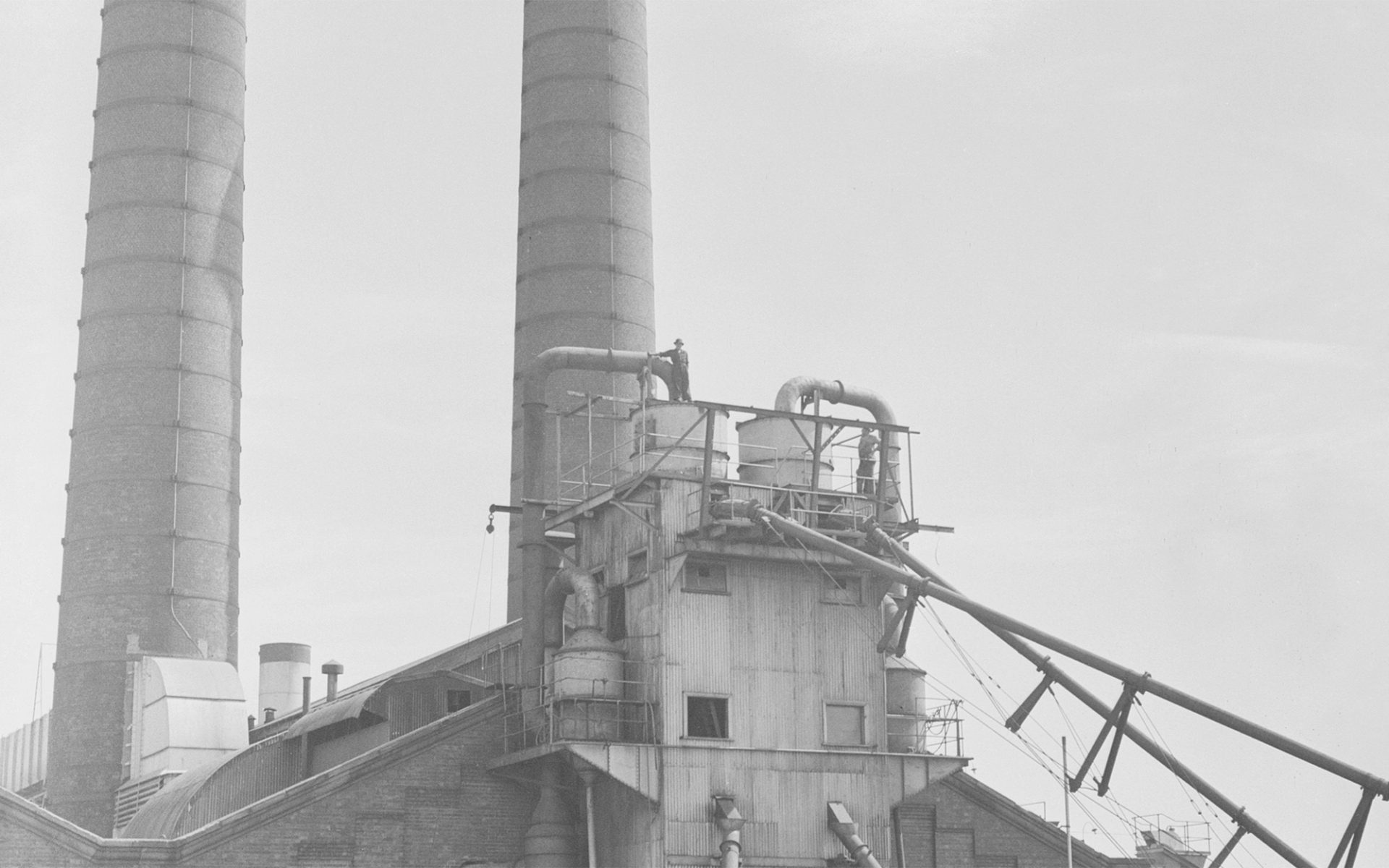
Presented by the Powerhouse, 100 Climate Conversations profiles innovators leading Australia’s response to climate change.
As Australia’s most ambitious climate-focused cultural project, 100 Climate Conversations inspires action by presenting an evidence-based and empowering vision of the future. The program showcases 100 visionary Australians taking effective action to respond to the most critical issue of our time, climate change. From regional farmers sequestering soil carbon, Traditional Owners managing Country through cultural burning, architects building carbon-neutral homes, to entrepreneurs leading the world’s most ambitious renewable energy projects — each offers an inspired narrative of invention, community and resilience.
The conversations, hosted by the nation’s most respected journalists, is being recorded live at the Powerhouse. Video and transcripts are uploaded to our website and a podcast, produced in partnership with Spotify, is released weekly. Upon completion records of the 100 conversations will be archived for future generations as part of the museum’s collection.

















